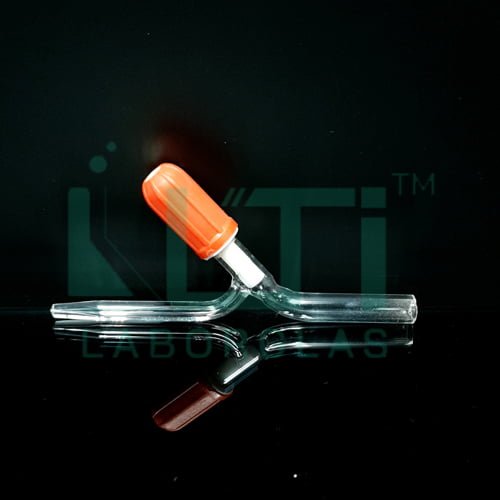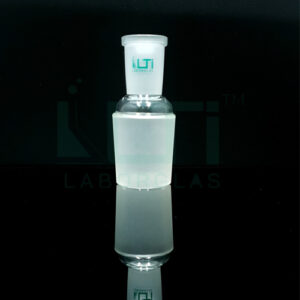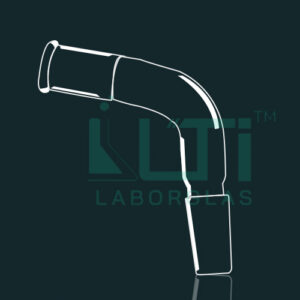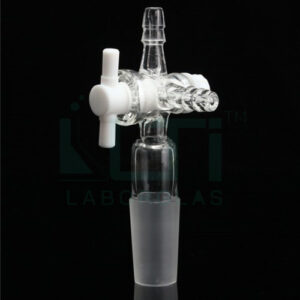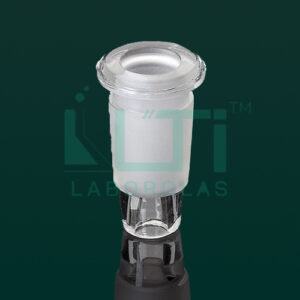- material: borosilicate glass 3.3
- Chemical Resistant
| PART NO. | Bore (mm) | Pack (qty.) |
| 1640-3 | 0-3 | 10 |
Here are some common uses for a burette needle valve stopcock, GP:
- Titration Experiments:
- Burette needle valve stopcocks are primarily used in titration experiments where precise control of the titrant flow rate is essential for accurate and controlled addition to the analyte solution.
- Quantitative Analysis:
- In analytical chemistry, especially during quantitative analysis, burette needle valve stopcocks are used to deliver precise volumes of titrant for determining the concentration of a substance in a solution.
- Chemical Synthesis:
- These stopcocks may be employed in chemical synthesis processes where controlled addition of a reagent is required with a high level of accuracy, and the needle valve design allows for fine-tuned adjustments.
- Quality Control:
- Burette needle valve stopcocks are used in quality control procedures, especially in industries where accurate volume measurements are crucial.
- Educational Laboratories:
- Burettes with needle valve stopcocks are commonly used in educational laboratories for teaching titration techniques and principles of volumetric analysis.
- Standardization of Solutions:
- Burette needle valve stopcocks are utilized in the standardization of solutions, ensuring that the concentration of a solution is accurately known.
- pH Titration:
- In pH titrations, where the endpoint is determined by a change in pH, burette needle valve stopcocks with precise control play a critical role in achieving accurate results.
- Research Applications:
- Burette needle valve stopcocks are used in various research applications where precise volumetric measurements are required for experimentation.
- Calibration Procedures:
- These stopcocks may be used in the calibration of laboratory equipment, ensuring that the volumetric measurements are accurate.
- Trace Analysis:
- In laboratories performing trace analysis, burette needle valve stopcocks can help achieve the necessary precision for measuring small volumes of titrant.
- Microscale Chemistry:
- In microscale chemistry experiments, where smaller quantities of reagents are used, the needle valve design allows for fine adjustments and control in confined spaces.

